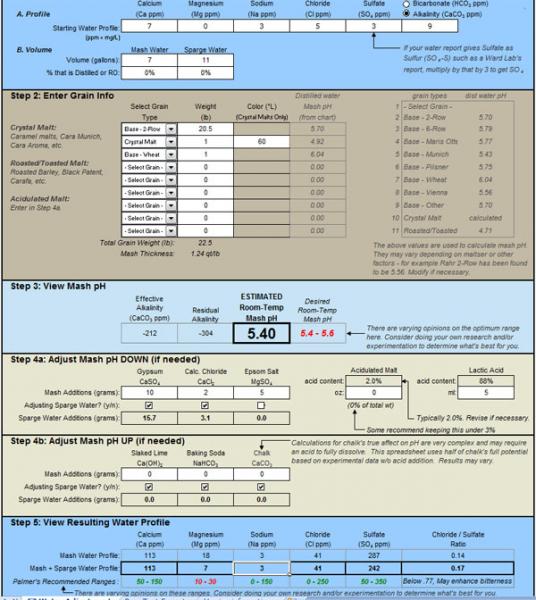I'm hoping for a bit of advice. I've been reading all weekend about Bru'n water, EZ Water Calculator 3.0, and water adjustments. I think I've gotten the gist of what each adjustment does and the various ways to adjust for mash and sparge PH.
However, I'm still confused about mineral adjustments in the boil kettle specific to each beer. I've read numerous times that the typical water profiles (burton for an IPA, etc) are terribly unreliable as most breweries conducted water adjustments. Further, I've read here that the Palmer recommendations can be very off and they should be taken with a grain of salt. I even purchased 'designing great beers' hoping for more water adjustment advice, but it mostly relies on the typical water profiles.
So given the disparities with the information available to us, I'm wondering if there are rules of thumb to abide by with each category of beer? Or if there is a great book/website that would help?
I'm doing an APA tomorrow, and right now this is what my ezwater profile looks like. I have no idea if the chloride/sulfate ratio is too low, if my sulfate is too high, if my sodium is too low, etc. The 'burton' profile seems far too extreme when entering the numbers.

However, I'm still confused about mineral adjustments in the boil kettle specific to each beer. I've read numerous times that the typical water profiles (burton for an IPA, etc) are terribly unreliable as most breweries conducted water adjustments. Further, I've read here that the Palmer recommendations can be very off and they should be taken with a grain of salt. I even purchased 'designing great beers' hoping for more water adjustment advice, but it mostly relies on the typical water profiles.
So given the disparities with the information available to us, I'm wondering if there are rules of thumb to abide by with each category of beer? Or if there is a great book/website that would help?
I'm doing an APA tomorrow, and right now this is what my ezwater profile looks like. I have no idea if the chloride/sulfate ratio is too low, if my sulfate is too high, if my sodium is too low, etc. The 'burton' profile seems far too extreme when entering the numbers.



